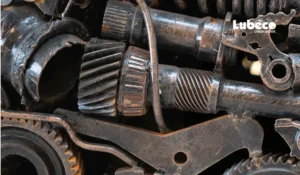Introduction
Machining operations are crucial in the industrial industry for turning raw materials into final goods. High machining performance is something that manufacturers constantly strive for because it has a direct impact on things like productivity, surface finish, tool life, and overall operating costs. The selection of cutting fluids is a crucial element in enhancing machining performance. Water-soluble metal cutting fluids have emerged as a leader among them due to their versatility in improving machining operations.
What are Water-Soluble Metal Cutting Fluids?
Metalworking fluids (MWFs), commonly referred to as coolants or water-soluble metal cutting fluids, are liquids that are combined with water to form a solution utilized during machining operations. These fluids are intended to decrease friction, dissipate heat, and enhance the machinability of materials, which will ultimately increase performance.
Optimizing Machining Performance with Water-Soluble Cutting Fluids
The following best practices for manufacturers to take into account in order to fully reap the benefits of water-soluble metal cutting fluids and improve machining performance:
- Concentration:It’s important to keep the correct fluid-to-water ratio. A concentration that is either too high or too low might have negative effects on performance, such as foaming. It is vital to monitor and make modifications frequently.
- Fluid Quality: Consistent performance is guaranteed by using high-quality cutting fluids with the right additives. Fluids that are inexpensive or of low quality may cause issues like bacterial development or inadequate lubrication.
- Fluid Delivery System:Utilize a fluid delivery system that is effective in ensuring a steady, controlled supply of cutting fluid to the cutting zone. This avoids problems like uneven cooling or insufficient lubrication.
- Continual Upkeep:The coolant system should be cleaned and maintained on a regular basis to avoid the buildup of pollutants or microbial growth that could reduce the cutting fluid’s efficacy.
- Compatibility with Materials: Depending on the material, a different type of cutting fluid may be needed. To get the best results, make sure the fluid you choose is suitable with the construction of the workpiece.
- Operator Training: To maximize efficiency and ensure safety, proper training for machine operators on the usage, handling, and disposal of cutting fluids is crucial.
Conclusion
Metal cutting fluids that dissolve in water have proven to be helpful tools in the quest to improve machining performance. They contribute to increased tool life, surface finish, and overall machining efficiency through their capacity to dissipate heat, lower friction, enhance chip evacuation, and protect against corrosion. The advantages of water-soluble cutting fluids can be fully utilized by manufacturers by adhering to best practices in fluid concentration, quality, maintenance, and operator training, leading to cost savings, increased productivity, and higher-quality machined components.









